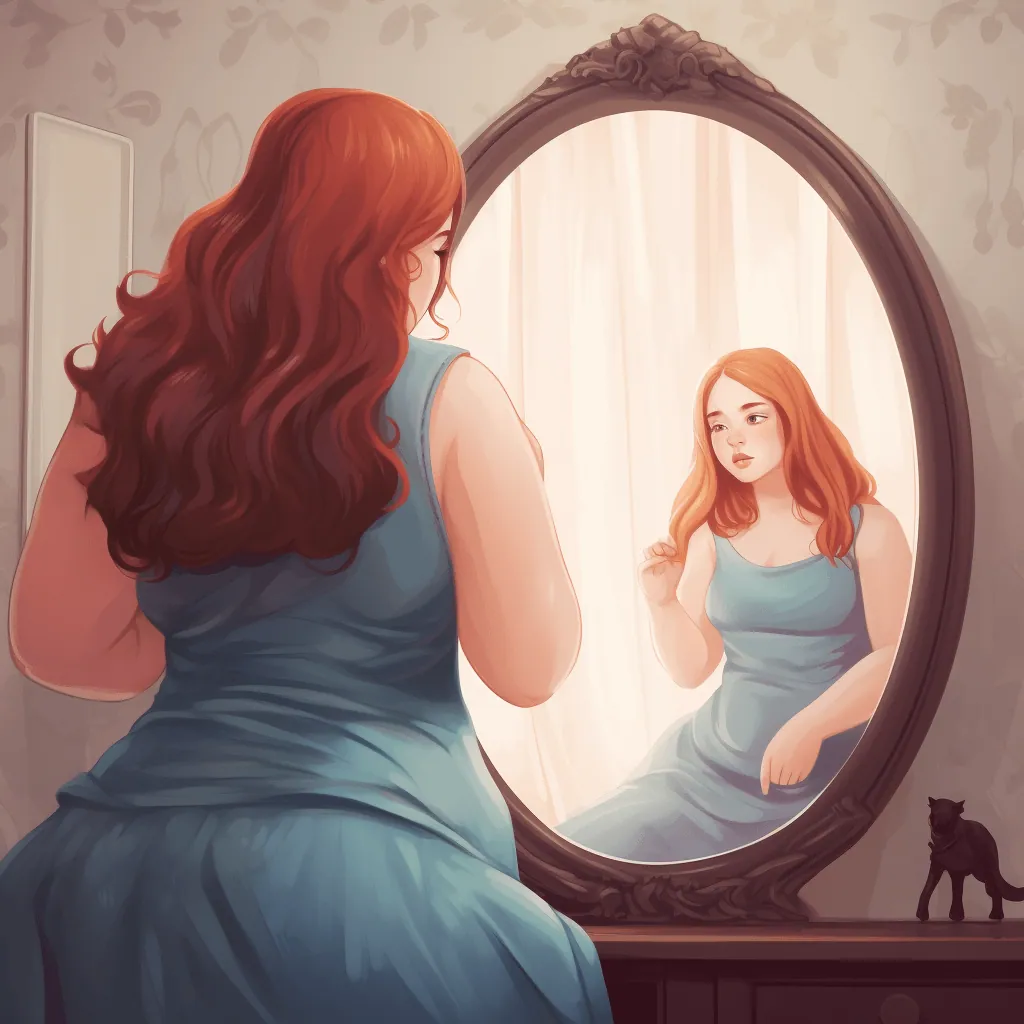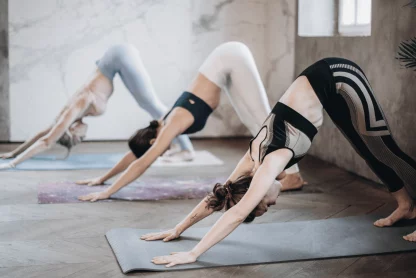In a world dominated for decades by narrowly defined beauty standards, a powerful counter-movement is unfolding, challenging the perceptions we’ve long held about our bodies. “Embracing Every Curve and Edge: The Rise of Body Positivity in Modern Culture” delves into the transformative journey of how we perceive beauty, health, and self-worth. From the glossy covers of magazines to the filters of social media, society’s portrayal of ‘ideal’ beauty has been pervasive. Yet, amidst these pressures, a vibrant movement is rising—one that celebrates the magnificence of every body type, skin tone, and unique feature. Through this exploration, we’ll journey from the roots of body image struggles to the uplifting tales of those championing self-love and acceptance today. Dive in and discover the waves of change shaping our modern culture, inviting everyone to love themselves, just as they are.
Table of Contents
- The Historical Perspective: Tracing the Roots of Body Image
- Media’s Role: From Unrealistic Standards to Celebrating Diversity
- Personal Journeys: Stories of Triumph Over Body Shaming
- Body Positivity in Fashion: Catwalks Embracing All Sizes
- The Mental Health Connection: Body Positivity’s Impact on Well-being
- Championing Change: Prominent Voices in the Body Positivity Movement
- Everyday Heroes: Grassroots Initiatives Promoting Self-love
- Body Neutrality vs Body Positivity: Understanding the Distinctions
- Tackling the Critics: Addressing Misconceptions and Controversies
- Looking Ahead: The Future of Body Positivity and Empowerment
- Frequently Asked Questions

The Historical Perspective: Tracing the Roots of Body Image
Antiquity to Middle Ages: Shifting Paradigms
Historically, body ideals have shifted and evolved, mirroring societal values and norms. In ancient civilizations, from the robust Venus figurines of prehistoric times to the athletic forms celebrated in Greco-Roman statues, body image catered to functionality and fertility. The Middle Ages, however, introduced a preference for more slender figures, often tying piety and morality to physical restraint and slenderness.
Renaissance to Early 20th Century: The Ebb and Flow of Preferences
The Renaissance marked a departure from the previous era, with artists like Botticelli portraying fuller, more voluptuous forms, highlighting a society that equated prosperity with fuller figures. But as we moved into the Victorian era and beyond, corsets cinched waists, symbolizing a repressive aesthetic. The Roaring Twenties once again disrupted this with the flapper’s boyish silhouette, challenging traditional gender norms and femininity. A study indicated that throughout these times, societal body ideals were often a reflection of economic and sociopolitical climates, suggesting a strong correlation between societal values and body preferences.
The Influence of Media and the Rise of Body Positivity
The 20th century saw the proliferation of media, amplifying and sometimes distorting societal ideals. With the “heroin chic” of the ’90s and the fitness craze of the 2000s, body ideals underwent rapid transformations. However, A study highlighted, the constant comparison with media figures led to increasing body dissatisfaction, birthing the body positivity movement as a counter-response.
The evolution of body image ideals serves as a testament to society’s ever-changing values. As we understand our past, it paves the way for a more inclusive and compassionate future.
Media’s Role: From Unrealistic Standards to Celebrating Diversity
The Media’s Unyielding Grip on Beauty
For decades, the media has been an omnipotent force shaping societal views on beauty standards. From film to fashion magazines, a singular, often unreachable beauty ideal was perpetually reinforced. Women were presented with a narrow mold—typically tall, thin, and Eurocentric. Men weren’t exempt, either; they grappled with the pressures of embodying hyper-masculinity and muscularity.
The Consequences of Narrow Representations
Such restricted portrayals had dire ramifications. Research elucidated the correlation between media consumption and body dissatisfaction, underscoring how exposure to idealized images often led to diminished self-esteem and adverse health behaviors.
Championing Change and Embracing Diversity
Thankfully, as the 21st century dawned, media began to witness a paradigm shift. Body positivity influencers, activists, and even brands began challenging age-old norms. Mainstream media platforms began broadening their horizons, showcasing diversity in size, color, gender, and physical abilities. A study offered insights into how varied representations could counteract media-induced body image issues, emphasizing the importance of exposure to diverse body types.
Towards an Inclusive Future
As media evolves, there’s hope that its portrayal of beauty will continue to diversify. Instead of being a mirror reflecting society’s insecurities, it holds the potential to be a beacon of inclusivity, celebrating every curve, edge, and hue that humanity offers.
In tracing media’s journey, it’s apparent that while its influence is mighty, it isn’t immutable. With conscious efforts, media can—and is—changing, heralding a more accepting and positive world.
Personal Journeys: Stories of Triumph Over Body Shaming
The Ubiquitous Shadow of Body Shaming
Body shaming, the act of mocking or criticizing someone for their physical appearance, has been an omnipresent demon lurking in the lives of countless individuals. Whether subtle jabs from loved ones or blatant remarks from strangers, these negative comments embed deep scars, often leading to years of self-doubt and insecurity.
The Psychological Toll of Body Critique
The consequences of body shaming aren’t merely skin deep. Numerous studies have underlined the severe psychological and emotional repercussions. A significant study revealed that adolescents subjected to body shaming exhibited increased levels of depressive symptoms and were more prone to adopting risky behaviors like binge eating.
From Victimhood to Victory: Triumph Over Shame
Yet, amidst this bleak landscape, countless stories of resilience and triumph shine bright. Sarah, once taunted for her curves, now champions body positivity through her influential blog. Then there’s Jay, who battled anorexia spurred by years of being labeled “too skinny,” and emerged as a vocal advocate for mental health. Their tales, among many others, underscore the potential to reclaim and celebrate one’s body. A study highlighted the importance of such personal narratives, demonstrating that sharing experiences can significantly reduce societal biases and stigmas related to body weight and size.
Empowering Voices, Changing Narratives
Stories of overcoming body shaming are not just individual victories; they are collective triumphs. By sharing their journeys, survivors are forging paths for countless others, challenging societal norms, and fostering a world where every body is celebrated, irrespective of its shape or size.
Body Positivity in Fashion: Catwalks Embracing All Sizes
Historical Bias: The Exclusivity of High Fashion
Historically, the fashion industry has been notorious for promoting a monolithic beauty standard, with tall, slender models dominating catwalks, campaigns, and cover pages. This exclusive portrayal often perpetuates a skewed understanding of beauty, pushing countless individuals into cycles of self-criticism and body dissatisfaction.
The Shift: Runways Becoming More Inclusive
However, the 21st century heralded a transformative phase. Influenced by body positivity activists and changing societal norms, designers and brands began incorporating a diverse range of models. Catwalks started to resonate with the vibrant tapestry of humanity, showcasing an array of sizes, skin tones, and physical abilities. A pivotal study found that exposure to diverse body types could significantly bolster body confidence, especially in women.
Brands Leading the Charge: From Niche to Norm
Pioneering brands like Aerie and Savage x Fenty by Rihanna have been at the forefront, proudly flaunting models of all sizes and rejecting airbrushing. Their soaring sales and popularity suggest a market hungry for authenticity. The study provided empirical evidence on how such diverse representation can reduce body dissatisfaction and the internalization of beauty ideals.
Fashion’s Flourishing Future
As catwalks continue to embrace inclusivity, the ripple effects extend beyond the fashion industry. They’re helping reshape societal perceptions, making beauty a broader, all-encompassing realm. The march towards body positivity in fashion is not just a trend; it’s a testament to society’s evolution.
The Mental Health Connection: Body Positivity’s Impact on Well-being
Body Image and Mental Well-being: Inextricably Linked
Body image, the mental representation and feelings one holds about their physical self, deeply influences an individual’s mental health. For many, a negative body image, perpetuated by societal beauty standards, can be a source of distress, leading to myriad mental health challenges including depression, anxiety, and eating disorders.
The Liberating Embrace of Body Positivity
The body positivity movement, which advocates for the acceptance and appreciation of all body types, acts as a balm to the wounds inflicted by unrealistic beauty standards. By recognizing and celebrating the diversity of human bodies, this movement fosters a sense of belonging and self-worth. A study found that embracing body positivity correlates with better psychological well-being and reduced tendencies towards disordered eating.
Promotion of Resilience and Self-compassion
A core tenet of body positivity is self-compassion, which involves treating oneself with the same kindness as one would treat a dear friend. By reducing self-criticism and embracing one’s perceived flaws, individuals fortify themselves against mental health struggles. A research emphasizes how self-compassion is inversely related to anxiety, depression, and rumination.
A Beacon for Better Mental Health
The rise of body positivity has provided countless individuals with tools to counteract the barrage of unrealistic beauty standards. As this movement gains momentum, it’s not just changing how we perceive beauty; it’s forging a path for improved mental health, fostering communities where every individual feels seen, valued, and enough.
Championing Change: Prominent Voices in the Body Positivity Movement
Trailblazers of Transformation
As the body positivity movement gained traction, certain voices emerged from the chorus, wielding influence, and reshaping societal perceptions. These trailblazers, through personal narratives, advocacy, and media presence, have been instrumental in challenging and redefining beauty standards.
Personal Narratives: The Power of Sharing
One of the movement’s strengths lies in the raw, unfiltered stories of individuals who have grappled with body image issues. These narratives serve as powerful testimonials, resonating with countless others and offering solace and solidarity. According to a study, sharing personal experiences, especially through social media platforms, can be instrumental in promoting body positivity and reducing body dissatisfaction.
Voices that Echo: Lizzo, Jameela Jamil, and Tess Holliday
Artists like Lizzo have taken the music industry by storm, not just with their talent but also their unabashed celebration of their bodies. Jameela Jamil, through her platform “I Weigh,” has critiqued toxic beauty standards, while Tess Holliday, a plus-size model, challenges conventional fashion norms. Their influence isn’t merely about visibility; it’s about actively challenging and reshaping societal norms. A study highlighted the importance of public figures in shifting societal attitudes, demonstrating that positive representation can significantly reduce weight bias.
Leading the Charge Forward
The prominent figures in the body positivity movement, backed by a supportive community, continue their relentless pursuit of inclusivity. Through their efforts, beauty’s definition is ever-evolving, becoming more encompassing and genuine, reminding the world that every body is worthy of celebration.
For decades, the media has been an omnipotent force shaping societal views on beauty standards. From film to fashion magazines, a singular, often unreachable beauty ideal was perpetually reinforced. Women were presented with a narrow mold—typically tall, thin, and Eurocentric.
Everyday Heroes: Grassroots Initiatives Promoting Self-love
The Unsung Champions of Change
While global celebrities and influencers undeniably play a role in amplifying body positivity, grassroots initiatives led by everyday heroes are the backbone of the movement. These local activists, workshops, and community groups work tirelessly on the ground, reaching individuals on a personal level and instilling a sense of self-worth.
Local Workshops: Safe Spaces for Sharing and Growth
Across cities and towns, small workshops and meetups offer platforms for individuals to discuss their body image struggles. Such forums, characterized by genuine empathy and understanding, are pivotal in fostering self-love. According to a study, such localized interventions have shown significant potential in improving participants’ body satisfaction and reducing internalization of beauty standards.
Community Campaigns: Celebrating Diversity at Home
Neighborhood initiatives, whether through local media campaigns, school programs, or community events, strive to showcase the beauty in diversity. These efforts challenge the community’s collective perception of beauty, emphasizing the unique charm in every individual. An investigation underscored the efficacy of community-based programs in promoting positive body image, especially among younger demographics.
A Groundswell of Self-Love
It’s in these intimate settings—classrooms, community centers, and local events—that real change often takes root. The everyday heroes leading these grassroots efforts may not have global recognition, but their impact resonates deeply within hearts and homes, sowing seeds of self-love and acceptance that will flourish for generations.
Body Neutrality vs Body Positivity: Understanding the Distinctions
The Landscape of Self-acceptance
The discourse around body image has evolved substantially in recent years, with terms like “body positivity” and “body neutrality” emerging at the forefront. While they both champion self-acceptance and self-love, understanding their nuances is key to navigating one’s personal journey of self-perception.
Body Positivity: A Celebration of All Bodies
The body positivity movement, born from the desire to challenge and expand societal beauty standards, emphasizes the celebration and appreciation of all body types. It advocates for the visibility and acceptance of marginalized bodies, encouraging individuals to love and embrace their physical selves. A study found that positive body image interventions, a cornerstone of body positivity, significantly bolster body appreciation.
Body Neutrality: Finding Peace with One’s Body
Body neutrality, on the other hand, is an approach that encourages individuals to view their bodies from a perspective of gratitude and respect, without necessarily focusing on love or beauty. This philosophy helps people detach their worth from their physical appearance, appreciating their body for its functions and abilities. A study supports this approach, suggesting that fostering a functional appreciation of one’s body can be beneficial in mitigating body dissatisfaction.
Navigating Personal Perceptions
Both body positivity and body neutrality offer valuable frameworks for individuals grappling with body image issues. Depending on personal experiences and perspectives, one might resonate more with a celebratory approach, while others may find solace in detachment and functional appreciation. Either way, both movements pave the way for healthier relationships with our bodies.
Tackling the Critics: Addressing Misconceptions and Controversies
Misconceptions Abound
Like any social movement that gains traction, the body positivity movement has had its fair share of critics. As it works to shift cultural paradigms, it’s essential to address the misconceptions and controversies that arise, ensuring the message remains clear and empowering.
Misconception 1: Promoting Unhealthiness
One of the most pervasive misconceptions is that body positivity promotes unhealthy lifestyles by celebrating larger bodies. However, the core of the movement is not to advocate for any particular size but to decouple self-worth from appearance. A study demonstrated that positive body image is linked to healthier behaviors and mental well-being, irrespective of one’s body size.
Misconception 2: Neglecting Underrepresented Groups
While the movement began as a space primarily for larger-bodied individuals, critics argue it has become commercialized, sidelining those it aimed to represent. Addressing this means constantly evolving the movement to ensure it’s inclusive of all races, genders, disabilities, and sizes. A study highlighted that understanding and promoting positive body image across diverse groups is crucial for the movement’s global effectiveness.
Navigating Controversies with Clarity
For the body positivity movement to effect lasting change, it’s essential to listen, adapt, and address criticisms with clarity and evidence. By tackling misconceptions head-on and ensuring the core message remains about self-worth, acceptance, and health at every size, the movement can continue to be a beacon for individuals worldwide.
Looking Ahead: The Future of Body Positivity and Empowerment
Evolving Paradigms: From Trend to Tradition
The body positivity movement, once a burgeoning niche, has now become a globally recognized call for change. As it stands at the cusp of a new era, understanding its trajectory is vital to ensure it continues to be a source of empowerment and acceptance for all.
Broadening Horizons: The Quest for Inclusivity
Though the movement has made strides in challenging restrictive beauty standards, there’s a growing need to ensure it remains inclusive. Body positivity’s future lies in embracing the vast spectrum of humanity, celebrating differences in age, race, disability, gender, and more. A study emphasized the significance of intersectional inclusivity in promoting holistic body positivity, suggesting that understanding varied experiences is key.
Empowerment through Education: The Role of Institutions
Schools, colleges, and universities have a pivotal role in shaping the next generation’s perception of body image. Integrating body positivity into educational curriculums can mold a society that inherently respects and celebrates all bodies. A study underlines the need for educational institutions to combat body shaming, as it directly impacts students’ mental health and academic performance.
Charting the Path Forward
As the body positivity movement ventures into the future, its success will depend on its adaptability and commitment to holistic empowerment. By expanding its horizons and cementing its principles in the foundational years of individuals, it promises a future where every curve, edge, and unique trait is not just accepted but celebrated.
Frequently Asked Questions
Practicing body positivity starts with changing the way you think and speak about your body. Challenge negative self-talk and replace it with affirmations that emphasize self-acceptance and self-love. Surround yourself with positive influences, such as social media accounts that celebrate diverse bodies and beauty. Focus on your body’s capabilities and what it allows you to do rather than fixating on appearance. Practice self-care routines that make you feel good, whether it’s exercise, meditation, or pampering yourself. Remember that body positivity is a journey, and it’s okay to have moments of doubt; what matters is your commitment to embracing and celebrating your unique body.
On the path to body positivity, individuals may encounter challenges such as societal pressure, internalized negativity, and comparison to others. Overcoming these challenges involves self-compassion and resilience. Recognize that it’s okay to have moments of insecurity; nobody feels positive about their body all the time. Surround yourself with supportive and body-positive influences. Unfollow social media accounts that promote unrealistic beauty ideals and seek out diverse and inclusive communities. Practice mindfulness to stay grounded in the present moment and avoid dwelling on past insecurities or future expectations. Remember that body positivity is about progress, not perfection, and each step toward self-acceptance is a victory.
Absolutely, body positivity can coexist with the pursuit of self-improvement or fitness goals. The key is to approach these goals from a place of self-love and self-care rather than self-criticism. Instead of aiming for an idealized body shape, focus on achieving a healthier, stronger, and happier version of yourself. Set realistic goals and be patient with your progress. Remember that self-improvement is about feeling your best, not conforming to societal standards. A body-positive mindset can actually enhance motivation and enjoyment of the journey toward better health.
Body positivity doesn’t necessarily mean you have to love every aspect of your body unconditionally. It means accepting your body as it is and learning to appreciate its uniqueness. It’s okay to have parts of your body that you’re not entirely comfortable with; most people do. The goal is to work towards self-acceptance and neutrality rather than self-criticism. Over time, you may find that as you embrace and care for your body, your feelings towards those aspects you’re not entirely comfortable with may evolve, leading to greater self-compassion. Remember that body positivity is a journey, and it’s perfectly normal to have moments of doubt or insecurity.









